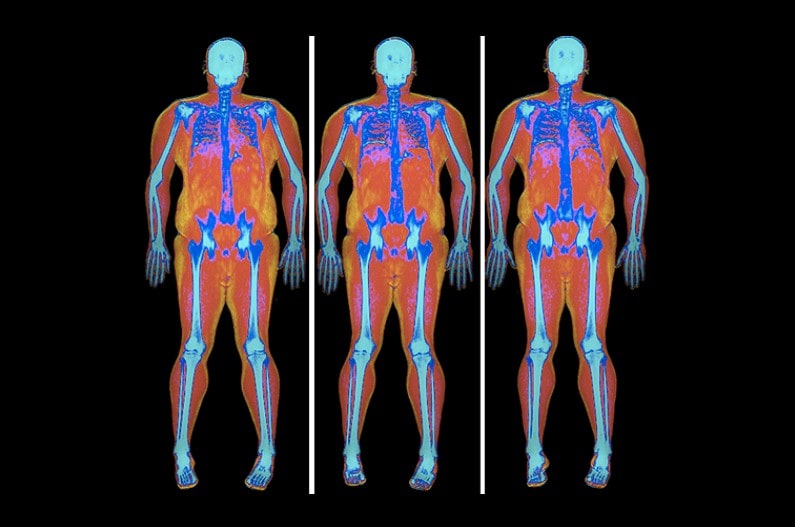As the name suggests, a bone density scan, also known as a DEXA scan, gauges the density of the bones. The scan indicates the strength of the bones as well as their calcium and mineral contents. Osteoporosis diagnosis, or determining an individual’s risk of developing osteoporosis, is aided by it. Dual-energy X-ray absorptiometry is referred to as DEXA. Due to the use of two X-ray beams with varying strengths, it is dual. These beams are aimed at the bones, and the strength of the bones is determined by measuring how much of the beams are absorbed. DEXA scans can detect even minute changes in bone density. This aids in osteoporosis diagnosis before severe consequences arise. The DEXA scan like the MRI near me is another way to evaluate how well treatments work. It also aids in figuring out the body’s composition. Also, note that a DEXA scan is not intended to diagnose arthritis or detect malignancies.
Table of Contents
What Is Osteoporosis?
As we age, our bones weaken. The disorder known as osteopenia is characterised by low bone mass and thin bones. Osteoporosis is not always correlated with low bone mass. Many athletes have strong bones despite having minimal bone mass. Osteoporosis is more common in patients with osteopenia who also have other risk factors. Osteoporosis is a progressive disease in which the bones continue to weaken until they are extremely brittle and prone to breaking. Porous bones are the direct translation of osteoporosis. Men and women in their later years can get osteoporosis, but postmenopausal women are much more likely to get it.
- Old bone cells break down, and new ones grow in our bones, constantly renewing.
- Young people create new bone cells quickly, but this process slows down as we age.
- The new bone cells that grow older do not eventually replace the old bone cells that are lost.
- As a result, osteoporosis develops, and bones thin away.
- Peak bone mass is often reached at or around the age of thirty.
- Following this, a gradual loss of bone cells occurs.
- This implies that the likelihood of osteoporosis decreases with increasing peak bone mass in youth.
Since osteoporosis is a quiet illness, there are no symptoms in the early stages. But there are a few indicators we should be aware of:
- Hunched over position
- Back discomfort
- Progressive loss of height as one ages
- A minor wound that becomes fractured
It is recommended to see an orthopaedic physician to examine for osteoporosis if any of the symptoms above are present. Typically, the physician will suggest a DEXA scan and determine the course of action depending on the scan’s findings.
Who Needs a Dexa Scan?
Osteoporosis is more common in women over the age of fifty. This is due to a decrease in estrogen levels during menopause, which lowers bone density. This indicates that there is a very significant fracture risk for women in this category. They are, therefore, typically requested to have a DEXA scan. The following factors also determine a DEXA scan’s necessity:
- Being extremely light in weight
- Prior fracture history
- Reduction in height of more than ½ of an inch in a year
- History of osteoporosis in the family
- Having additional medical issues such as diabetes, rheumatoid arthritis, etc.
- Using cancer medications, steroids, etc.
What Happens During Dexa Scan?
- A radiologist will conduct a DEXA scan.
- On an x-ray table, the patient will be instructed to lie down and remain still.
- A modest dose of X-ray beams will be passed over the patient’s body via a scanning machine.
- The soft tissues will absorb part of the x-rays.
- An X-ray detector will measure the x-rays that pass through, and the density of the bones will be ascertained from this data.
Dexa Scan Results
The DEXA or MRI near me scan results of the patient will be compared to the bone density of a young adult in good health and to the bone density of a healthy adult who shares the patient’s age, sex, and ethnicity. Two values are obtained after the comparison. We refer to this as the standard deviation (SD). There are two results determined:
- T-score: The patient’s and a healthy young adult’s differences in bone density.
- Z-score: The difference between the patient’s bone density and a healthy adult with the same parameters. The Z score assesses a person’s bone density up to thirty.
Accuracy of Scan
Physicians prefer to use DEXA scan data since they are reliable for determining bone density. However, the accuracy of the scan may be impacted in certain rare cases (such as those with spondylosis or those who have undergone prior spinal surgery). We may conclude that a DEXA scan is useful for physicians to identify osteoporosis and create a fracture prevention strategy. The benefits outweigh the risks since the body is only exposed to extremely low radiation doses.
Conclusion
An indispensable instrument for evaluating body composition and bone health is a Dexa Scan. Giving precise measurements supports the decision-making process for treatment and progress monitoring, guaranteeing that you stay in good health and take preventative measures against bone-related problems.
